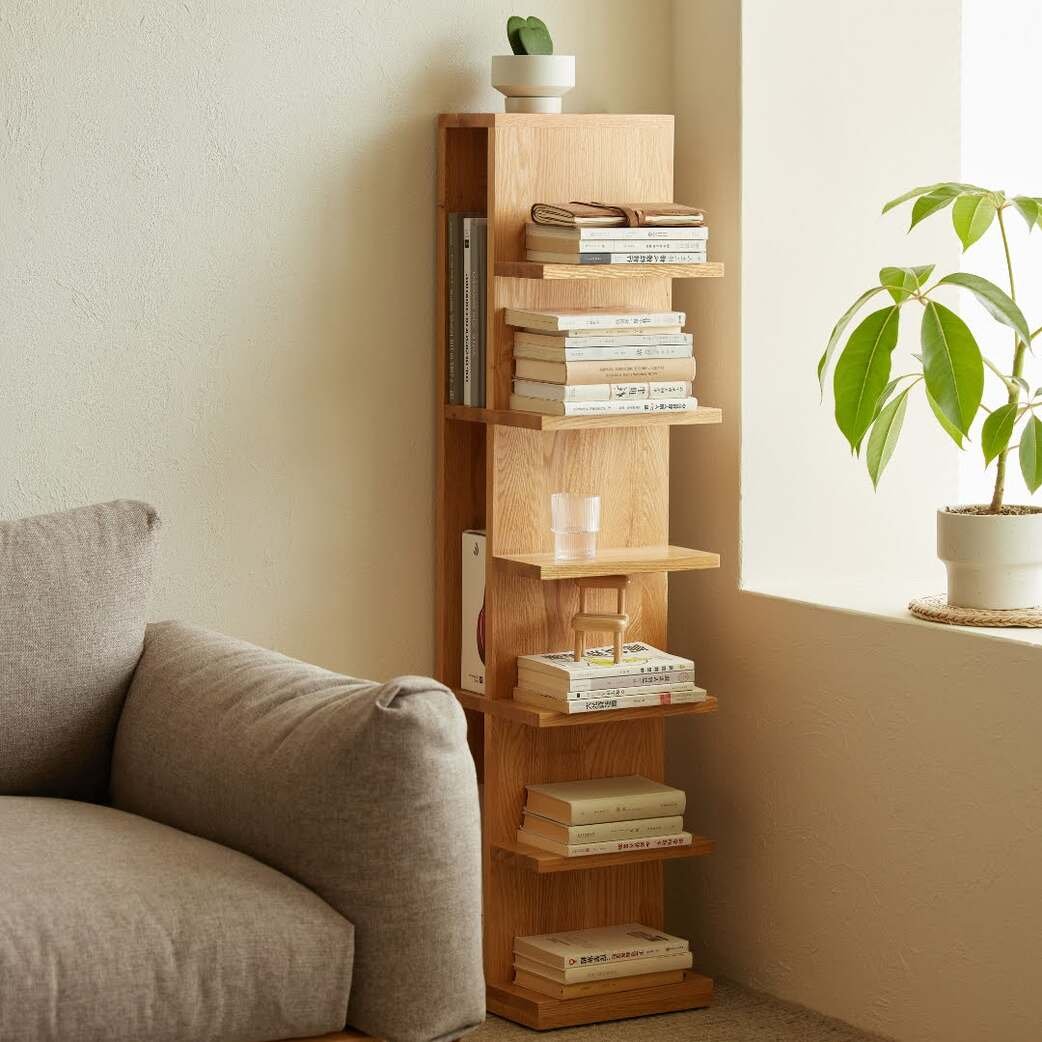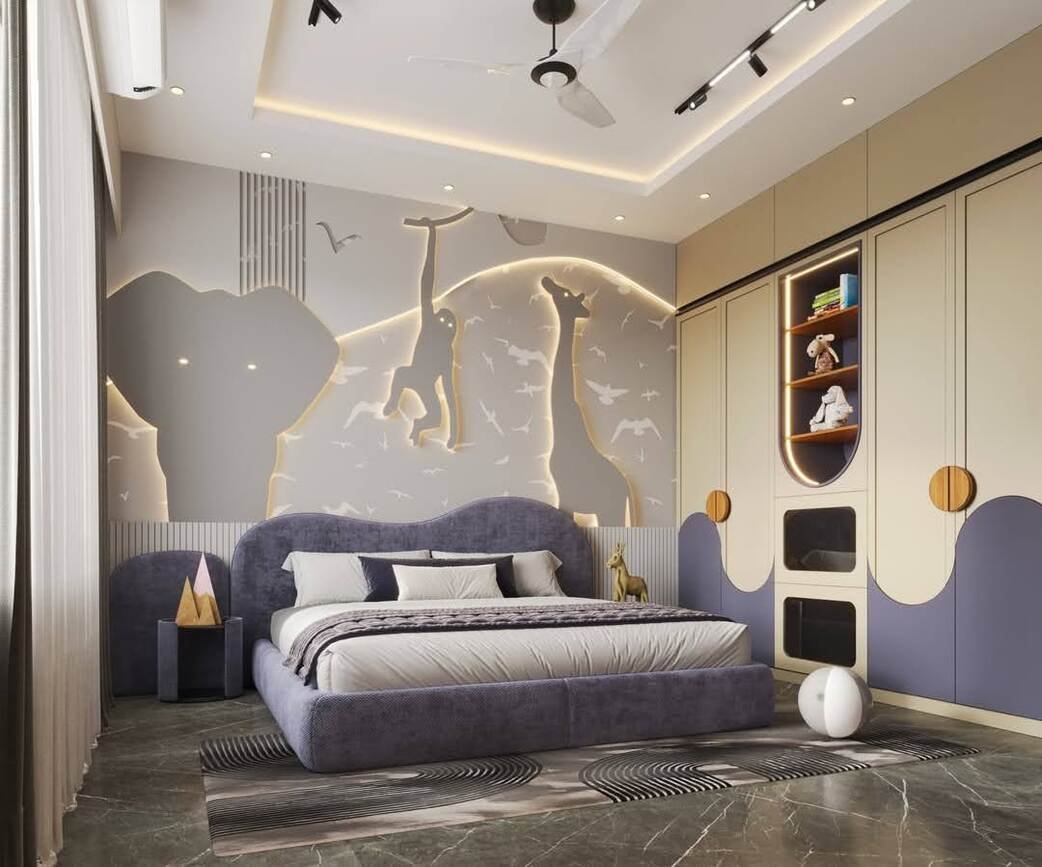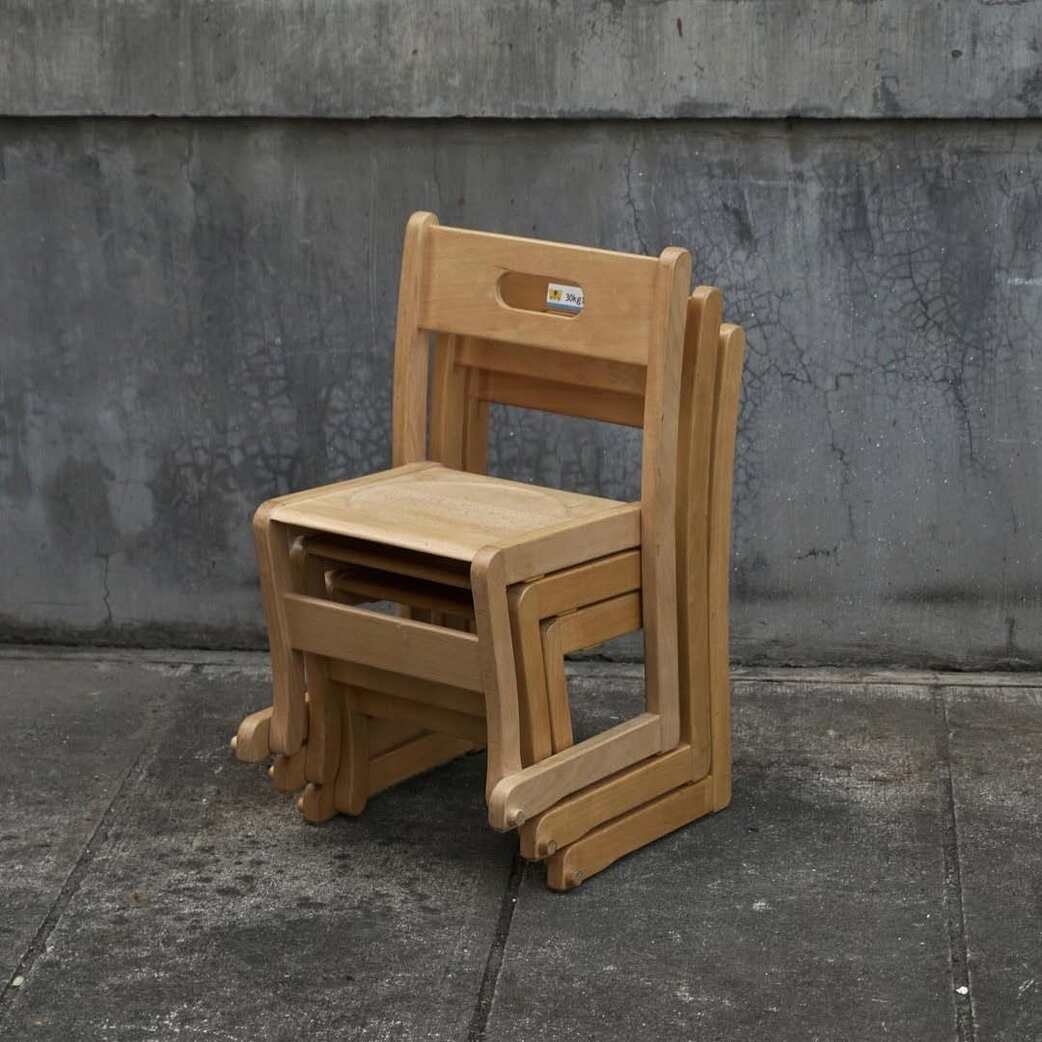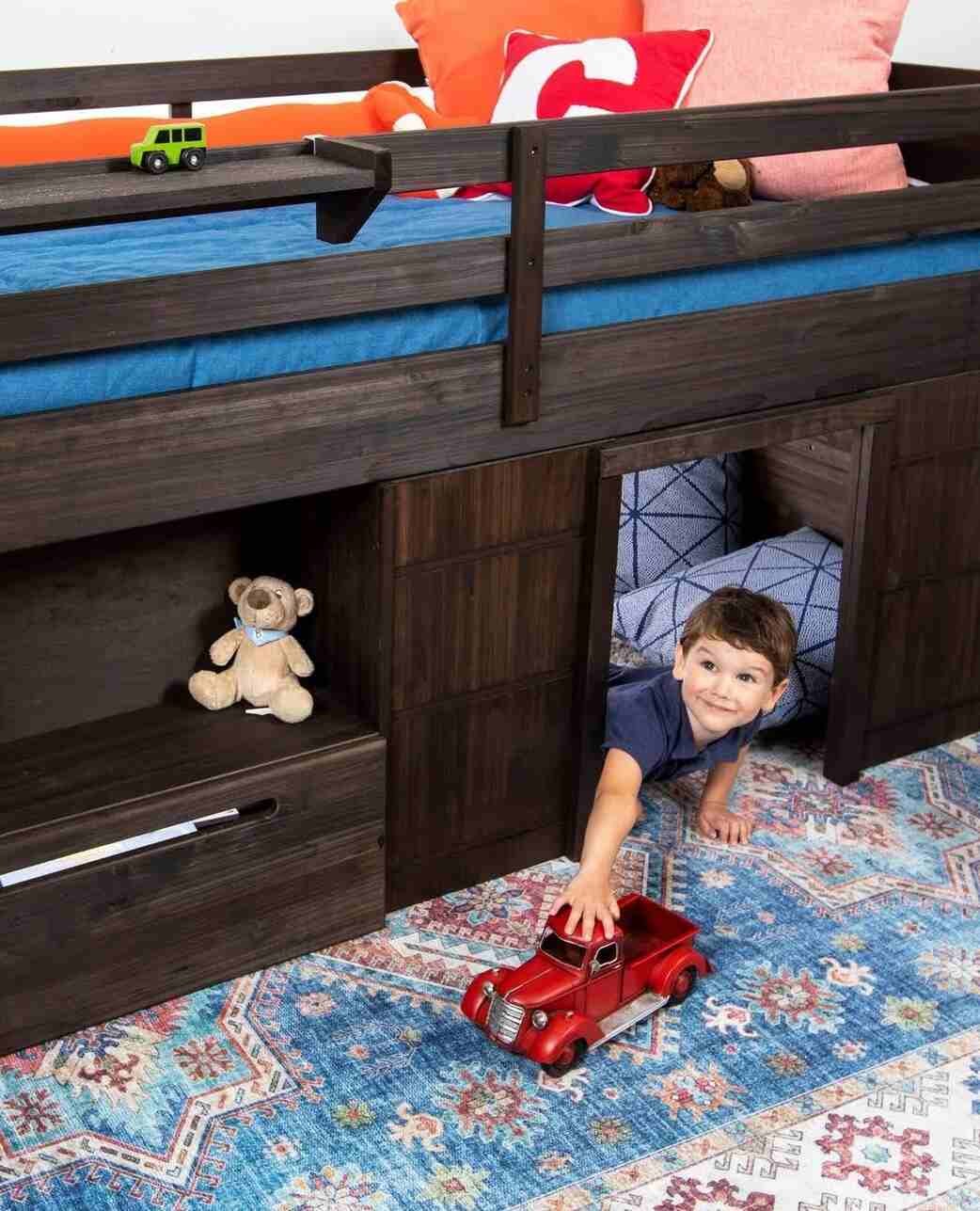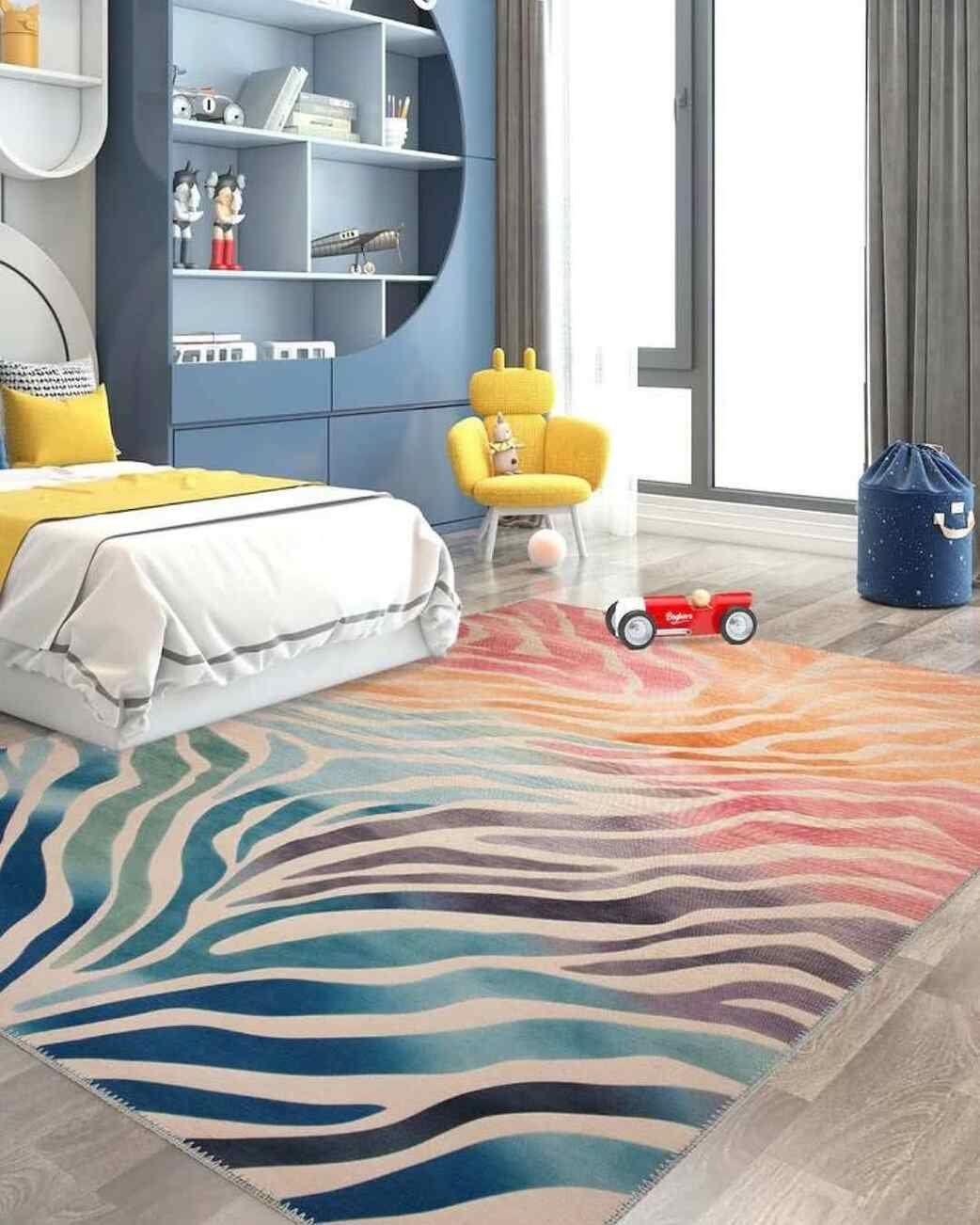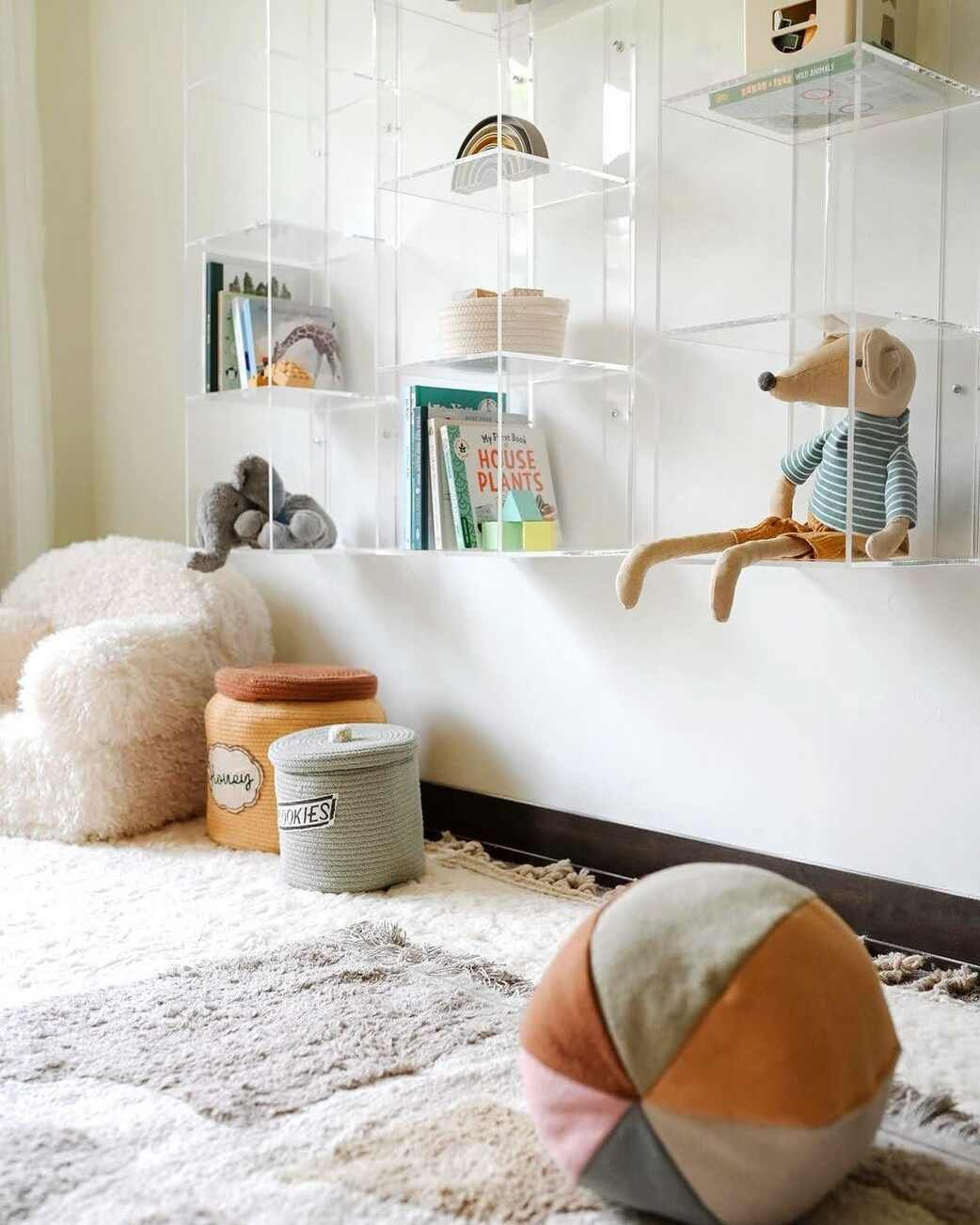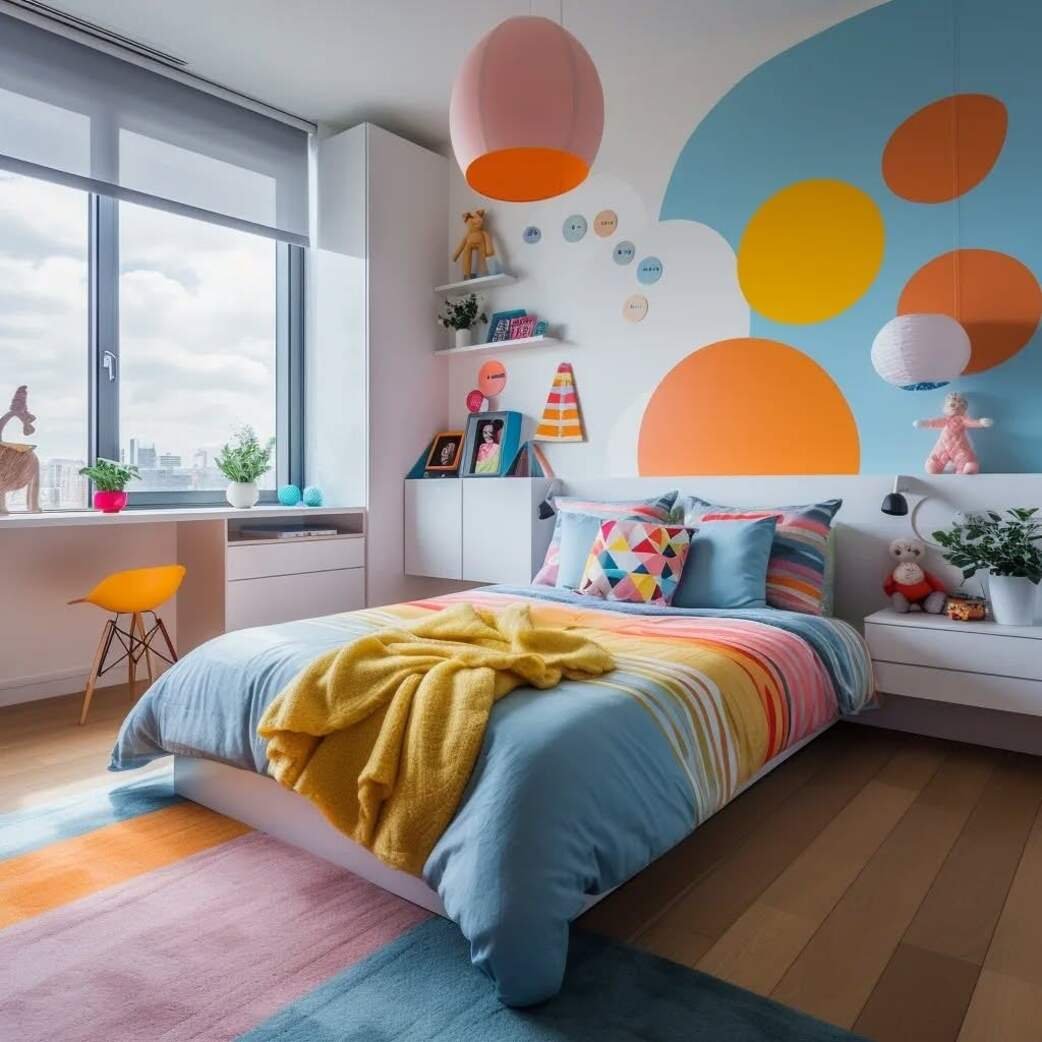In this blog, I will suggest you how to design small kids bedroom.
You can design a small kid’s room as an exciting opportunity to blend creativity with functionality. While space may be limited, the potential to make it both stylish and practical is endless.
From clever storage solutions to vibrant decor accents, every choice counts in transforming a cramped room into a cozy, organized sanctuary.
Whether you’re looking to maximize every inch of space or add a playful twist, these top tips will help you turn your child’s small bedroom into a space that feels big on comfort, personality, and possibilities.
Let’s dive in and discover how to make every corner count!
Use Multi-Functional Furniture
You can maximize space in a small kid’s room with multi-functional furniture. For example, you can choose a bed with storage drawers underneath to store toys, clothes, or bedding—like the MALM Bed Frame from IKEA.
Another great option is a desk that doubles as a vanity, such as the Harriet Bee Vanity Desk from Wayfair, perfect for both studying and getting ready. These pieces help you make the most of limited space while keeping the room organized and stylish.
You can also choose a child’s needs, whether it’s extra storage or a multi-purpose workspace.
Maximize Vertical Space
You can maximize vertical space in a small kid’s room helps free up floor space for play. You can install tall storage units, like the Caden Tall Dresser from Pottery Barn Kids, for storing clothes and toys without taking up too much width.
You can use shelves above the bed or along walls for books and decor—IKEA’s LACK wall shelf or Billy Bookcase are perfect for this. You can implement, utilize underused wall space or add floating shelves above furniture to keep the room organized and functional while offering more play space.
Choose Light Colors
You can choose light colors like pastels or whites that can make a small kid’s room feel more open and spacious. Light hues reflect more light, creating an airy vibe. For paint, Benjamin Moore’s Classic Gray or Sherwin-Williams’ Alabaster work well in small spaces.
For furniture, you can opt for pieces in soft tones, like the Jona White Twin Bed from Wayfair. This combination of light walls, white furniture, and pastel accents will create a calm, expansive feel, perfect for a cozy yet roomy look.
Incorporate Smart Storage Solutions
You can use foldable and stackable furniture that is perfect for small kids’ rooms, offering flexibility and saving space. IKEA’s LIATORP Drop-Leaf Table folds down when not in use, while Target’s Room Essentials Stackable Chairs can be stored away easily.
You can use these pieces to create extra room for play or activities when needed and can be tucked away to keep the room organized. You can also opt for fold-out tables or stackable chairs to maximize space and maintain a functional, clutter-free environment.
Opt for Foldable or Stackable Furniture
You can opt for smart storage solutions that are key to keeping a small kid’s room organized. You can use under-bed storage like IKEA’s KALLAX or Wayfair’s Giantex Under-Bed Drawer for toys and extra bedding. Wall-mounted hooks from Command Hooks or Anthropologie are perfect for hanging backpacks, jackets, and accessories.
You can use stackable bins from The Container Store to offer easy-to-access storage for smaller items like books or toys. You can utilize these spaces—under the bed, on walls, and with stackable bins—you can keep the room neat and functional while maximizing space.
Go for a Lofted Bed
Lofted bed is an excellent way to maximize space in a small kid’s room by elevating the bed and creating extra room underneath for a play area, desk, or storage. IKEA’s STUVA Loft Bed and Pottery Barn Kids’ Carly Loft Bed offer designs with built-in storage or space for a study nook.
You can implement, assess your child’s needs and use the freed-up space beneath the bed for toys, a desk, or extra storage, creating a functional, organized, and playful environment.
Create Defined Zones
You can create defined zones in a small kid’s room to help organize activities. You can use rugs to separate areas, such as a colorful one for the play area and a neutral one for the study space. Companies like Wayfair offer playful rugs like the Safavieh Kids Rug, while IKEA’s LOHALS Collection has great options for study zones.
You can opt for curtains, like the Threshold Room Darkening Curtain from Target, can be used to divide the room into sleep, play, and study zones for better organization and functionality. This approach maximizes space while giving each activity its own area.
Use Multi-Use Wall Decor
You can use multi-use wall décor that combines style and functionality in a small kid’s room. Wall decals from RoomMates Decor can personalize the space with fun designs. You can opt for floating shelves like IKEA’s LACK Shelf to provide extra storage for books or toys while enhancing the room’s decor. Pegboards from The Container Store offer customizable storage for accessories, craft supplies, or hats.
You can implement by just adding decals for personalization, shelves for storage, and pegboards for organization, creating a stylish, clutter-free, and functional space.
Personalize with Colorful Accents
You can personalize with colorful accents is a great way to add personality to a small kid’s room without overwhelming it. You can use colorful bedding like Pottery Barn Kids’ Happy Cloud Collection or Target’s Pillowfort pillows to bring in pops of color.
You can add vibrant wall art from Minted or playful wall decals from RoomMates Decor to create a lively, fun atmosphere. You can start with a key piece like bedding or pillows and build around it with smaller colorful accents, giving the room energy and charm while maintaining balance.
Incorporate a Functional Layout
You can incorporate a functional layout in a small kid’s room that is key to creating flow and maximizing space. You can arrange furniture so it doesn’t block windows or doors, allowing for easy movement.
For example, place the bed against a wall to maximize natural light, and opt for compact furniture like the MALM 6-Drawer Dresser from IKEA or the Harriet Bee Writing Desk from Wayfair. You can measure the room to ensure larger items don’t obstruct pathways, and use smaller pieces for balance. A well-planned layout keeps the room spacious, accessible, and organized.
Conclusion
You can design a small kid’s room can be both a fun and practical challenge, but by using smart strategies, you can create a space that is functional, stylish, and spacious. From multi-functional furniture and vertical storage to light colors and personalized accents, each element plays a key role in making the most of the space.
Whether you can create defined zones for different activities or incorporate a functional layout for easy flow, these tips help optimize both storage and comfort. With the right combination of design elements, your child’s room can be a cozy, organized haven that grows with them while offering plenty of room to play, study, and rest.



